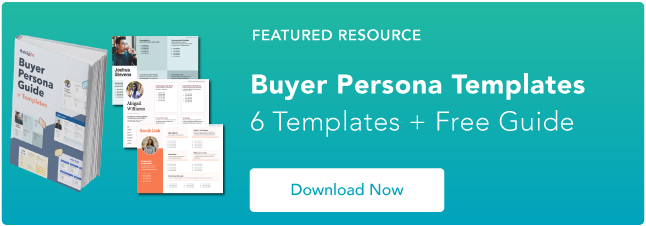
By now, you probably know that today’s buyers hold all of the power when making a purchasing decision. You’re also probably aware that they’re doing some of their research online. But have you really adapted your marketing plan to match the way today’s customers shop and buy?
Consider these recent statistics about B2B buyers from a 2015 study by Think With Google:
- 89% of buyers use the internet during the B2B research process.
- 71% start with a generic search query (they’re looking for a topic, not your brand).
- 57% of their evaluation is done before they’ll perform an action on your site.
What’s a marketer to do to make sure your buyers find you early and often? Go where they’re going, of course.
That might sound obvious, but how deeply do you understand exactly where your buyers are doing their research and what is influencing their decisions? That is where research comes into play.
Whether you’re a newbie or experienced with market research, this guide will give you a blueprint for conducting a thorough buyer’s journey study.
How to Do Market Research: A Step-by-Step Guide to Understanding Your Buyer’s Journey
Step 1: Define Your Personas
Before you dive into how your personas make buying decisions, you must first understand who they are. This is where buyer personas come in handy.
Buyer personas — sometimes referred to as marketing personas — are fictional, generalized representations of your ideal customers. They help you visualize your audience, streamline your communications, and inform your strategy.
To get started with creating your personas, check out these free templates, as well as this helpful tool. These resources are designed to help you organize your audience segments, collect the right information, select the right format, and so on.
You may find that your business lends itself to more than one persona — that’s fine! You just need to be sure that you’re being thoughtful about the specific persona you are optimizing for when planning content and campaigns.
Step 2: Recruit Buyers
Now that you know who your personas are, you’ll need to find a representative sample of your target customers to understand their buyer’s journey. These should be folks who recently made a purchase (or purposefully decided not to make one).
We’ve developed a few guidelines and tips that’ll help you get the right participants for your research. Let’s walk through them …
How to Determine Who to Recruit
Start with the characteristics that apply to your buyer persona. This will vary for every organization, but here are some additional guidelines that will apply to just about any scenario:
- Shoot for 10 participants per persona. We recommend focusing on one persona, but if you feel it’s necessary to research multiple personas, be sure to recruit a separate sample group for each one.
- Select people that have recently interacted with you. You may want to focus on folks that have completed an evaluation within the past six months — or up to a year if you have a longer sales cycle or niche market. You’ll be asking very detailed questions, so it’s important that their experience is fresh.
- Aim for a mix of participants. You want to recruit people that have purchased your product, folks that purchased a competitor’s product, and a few that decided not to purchase anything at all. While your own customers will be the easiest to find and recruit, sourcing information from others will help you develop a balanced view.
How to Recruit the Best Participants
Market research firms have panels of people they can pull from when they want to conduct a study. Trouble is, most individual marketers don’t have that luxury — and that’s not necessarily a bad thing. In fact, the time you’ll spend recruiting exclusively for your study will often lead to better participants.
Here’s a simple recruiting process to guide your efforts:
- Pull a list of customers who made a recent purchase. As we mentioned before, this is usually the easiest set of buyers to recruit. If you’re using a CRM system, you can run a report of deals that closed within the past six months and filter it for the characteristics you’re looking for. Otherwise, you can work with your sales team to get a list of appropriate accounts from them.
- Pull a list of customers who were in an active evaluation, but didn’t make a purchase. You should get a mix of buyers who either purchased from a competitor or decided not to make a purchase. Again, you can get this list from your CRM or from whatever system your Sales team uses to track deals.
- Call for participants on social media. Try reaching out to the folks that follow you on social media, but decided not to buy from you. There’s a chance that some of them would be willing to talk to you and tell you why they ultimately decided not to buy your product.
- Leverage your own network. Get the word out to your coworkers, former colleagues, and LinkedIn connections that you’re conducting a study. Even if your direct connections don’t qualify, some of them will likely have a coworker, friend, or family member who does.
- Choose an incentive. Time is precious, so you’ll need to think about how you will motivate someone to spend 30-45 minutes on you and your study. On a tight budget? You can reward participants for free by giving them exclusive access to content. Another option? Send a simple handwritten ‘thank you’ note once the study is complete.
Step 3: Prepare a Discussion Guide
The best way to make sure you get the most out of your conversations is to be prepared. You should always create a discussion guide — whether you’ll be conducting a focus group or a phone interview — to make sure you cover all of the top-of-mind questions and use your time wisely.
(Note: This is not intended to be a script. The discussions should be natural and conversational, so we encourage you to go out of order or probe into certain areas as you see fit.)
Your discussion guide should be in an outline format, with a time allotment and open-ended questions allotted for each section.
Wait, all open-ended questions?
Yes — this is a golden rule of market research. You never want to “lead the witness” by asking yes/no questions, as that puts you at risk of unintentionally swaying their thoughts by leading with your own hypothesis. Asking open-ended questions also helps you avoid those painful one-word answers.
Here’s a general outline for a 30-minute phone interview with one B2B buyer. Although, we recommend that you schedule 45 minutes to allow for tardiness, potential technology issues, and bit of small talk.
Introduction
This section is intended to break the ice and get the respondent(s) talking.
- Introduce yourself and why you are doing this study.
- Ask the buyer to give you a little background information (their title, how long they’ve been with the company, and so on).
- Ask a fun/easy question to warm things up (first concert attended, favorite restaurant in town, last vacation, etc.).
Buying Environment (5 Minutes)
Before getting into the details around a specific purchase, it will be helpful to understand their role and team better.
- Describe to me how your work team is structured.
- Tell me about your personal job responsibilities.
- What are the team’s goals and how do you measure them?
- What has been your biggest challenge in the past year?
Now make a transition to acknowledge the specific purchase they made that led to you including them in the study. The next three sections will focus specifically on that purchase.
Awareness Stage (5 Minutes)
Here, you want to understand how they first realized they had a problem that needed to be solved without getting into whether or not they knew about your brand yet.
- Think back to when you first realized you needed a [name the product/service category, but not yours specifically]. What challenges were you facing at the time?
- How did you know that something in this category could help you?
- How familiar were you with different options on the market?
Consideration (10 Minutes)
Now you want to get very specific about how and where the buyer researched potential solutions. Plan to interject to ask for more details.
- What was the first thing you did to research potential solutions? How helpful was this source?
- Where did you go to find more information?
If they don’t come up organically, ask about search engines, websites visited, people consulted, and so on. Probe, as appropriate, with some of the following questions:
- How did you find that source?
- How did you use vendor websites?
- What words specifically did you put into Google?
- How helpful was it? How could it be better?
- Who provided the most (and least) helpful information? What did that look like?
- Tell me about your experiences with the sales people from each vendor.
Decision (10 Minutes)
- Which of the sources you described above was the most influential in driving your decision?
- What, if any, criteria did you establish to compare the alternatives?
- What vendors made it to the short list and what were the pros/cons of each?
- Who else was involved in the final decision? What role did each of these people play?
- What factors ultimately influenced your final purchasing decision?
Closing
Here, you want to wrap up and understand what could have been better for the buyer.
- Ask them what their ideal buying process would look like. How would it differ from what they experienced?
- Allow time for further questions on their end.
- Don’t forget to thank them for their time and confirm their address to send a thank-you note or incentive.
Step 4: Lead the Conversations
Now for the fun part: talking to people! This step is pretty straightforward, but here are some tips to make sure everything runs smoothly:
- Give participants space to think. Be comfortable with moments of silence. You’ll be asking for detailed information, so they might need time to jog their memory or gather their thoughts.
- Don’t accept short answers. Get clams to open up by asking them for more detail if they provide a one-word answer. If you notice this as a pattern with a particular person, start to make your questions scenario based.
- Keep things on track. Give yourself permission to interrupt someone if they go off on an irrelevant tangent. You can avoid looking rude by saying, “That’s really interesting, but I’d like to shift gears” or “I hear what you are saying, now tell me about XYZ”.
Step 5: Summarize Your Findings
Feeling overwhelmed by the notes you took? We suggest looking for common themes that will help you tell a story and create a list of action items.
To make the process easier, try using your favorite presentation software to make a report, as it will make it easy to add in quotes, diagrams, or call clips. Feel free to add your own flair, but the following outline should help you craft a clear summary:
- Background. Your goals and why you conducted this study.
- Participants. Who you talked to. A table works well so you can break groups down by persona and customer/prospect.
- Executive Summary. What were the most interesting things you learned? What do you plan to do about it?
- Awareness. Describe the common triggers that lead someone to enter into an evaluation. Note: Quotes can be very powerful.
- Consideration. Provide the main themes you uncovered, as well as the detailed sources buyers use when conducting their evaluation.
- Decision. Paint the picture of how a decision is really made by including the people at the center of influence and any product features or information that can make or break a deal.
- Action Plan. Your analysis probably uncovered a few campaigns you can run to get your brand in front of buyers earlier and/or more effectively. Provide your list of priorities, a timeline, and the impact it will have on your business.
Conducting a buyer’s journey study can be a very eye-opening experience. Even if you think you know your buyers pretty well, completing the study will likely uncover new channels and messaging tips to help improve your interactions. Not to mention, you’ll be able to add “market research” skill as a skill to your resume.
How do you conduct market research? Share your tips in the comments section below.


